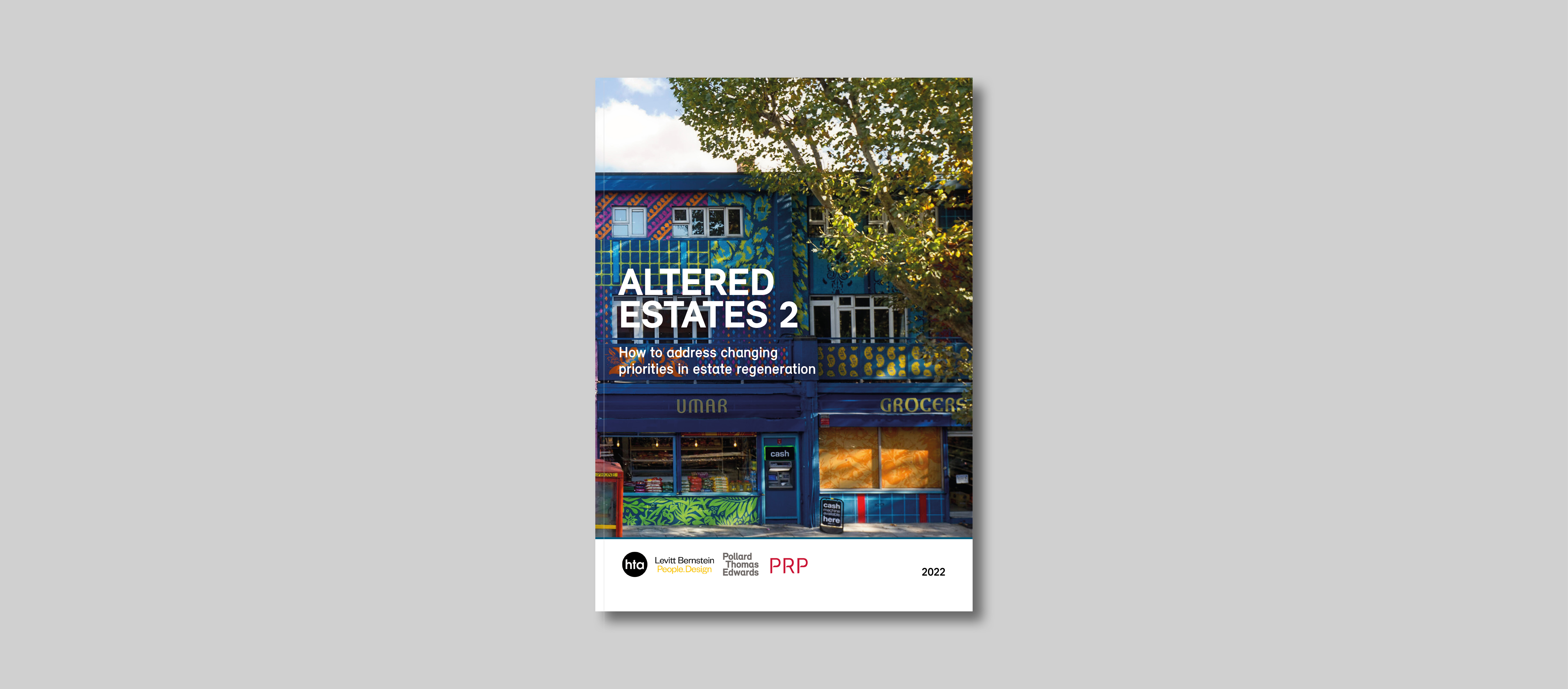
Leading housing architects show how successful estate regeneration can help to level-up disadvantaged neighbourhoods.
Altered Estates 2 illuminates the new and continuing challenges to successful estate regeneration in the UK, building on its forerunner Altered Estates (2016).
The challenges and solutions we set out in 2016 remain just as relevant today, but there have been significant changes of priority, in part triggered by momentous events from the Grenfell fire disaster and Brexit to the global pandemic, the climate crisis and a changing public mood around diversity and social inclusion.
Steep increases in energy prices, which will hit estate residents hard, and general increases in construction costs, which will affect the viability of all housing projects, have also altered the regen landscape.
Altered Estates 2 comes as the Government’s ‘levelling up’ plan – which has seen the Housing Ministry rebranded as the Department for Levelling Up, Housing and Communities (DLUHC) – seeks to rebalance opportunities throughout the country, with housing estates in the Midlands and North of England identified for regeneration.
With contributions from Andy von Bradsky, the Government’s former chief architect, and former Peabody boss Brendan Sarsfield, as well as leading practitioners from specialist housing architects HTA Design, Levitt Bernstein, Pollard Thomas Edwards and PRP, the report provides an authoritative, wide-ranging and reflective guide to estate regeneration, summarised in a set of specific recommendations.
Altered Estates 2 aims to set estate regeneration in today’s context by exploring six key themes. Here they are, with a selected recommendation from each:
- Planning for social value - Set, measure, monitor and review local social value targets, from early days to post-occupation: estate regeneration is about much more than housing.
- Building community support - Enable communities across the country to determine their own future by extending mandatory ballots beyond London.
- Supporting lifetime neighbourhoods - Make every new home suitable for young and old by adopting national space standards based on category M(4)2 accessibility.
- Giving pride to place - Create sustainable places and avoid excessive density by providing at least five square metres per person of accessible and useful shared open space.
- Addressing climate change - Scrap VAT on energy efficient refurbishment: recent concessions do not go far enough.
- Delivering responsible regeneration - Get ready to implement the Building Safety Act: clients, their advisors and designers must urgently upskill to meet their new responsibilities.
The report is aimed at a broad audience: central and local government; housing associations and housebuilders; contractors and other industry colleagues; architecture and planning professionals and students.
From the logistics of insulating older occupied homes, to the way communities in earmarked estates can feel imposed upon, to managing the risk of confusing ‘regen’ with ‘gentrification’ and ‘social cleansing’, best practice in this emerging discipline draws upon a wide range of skills.







